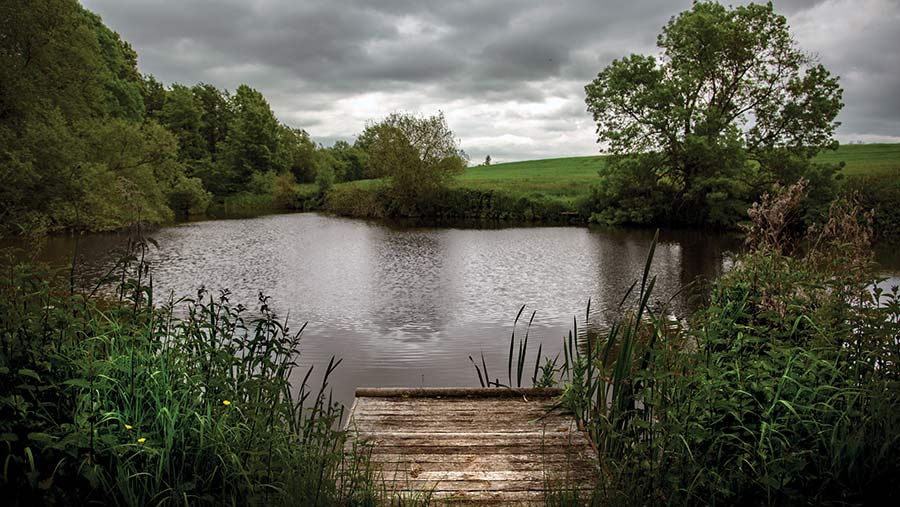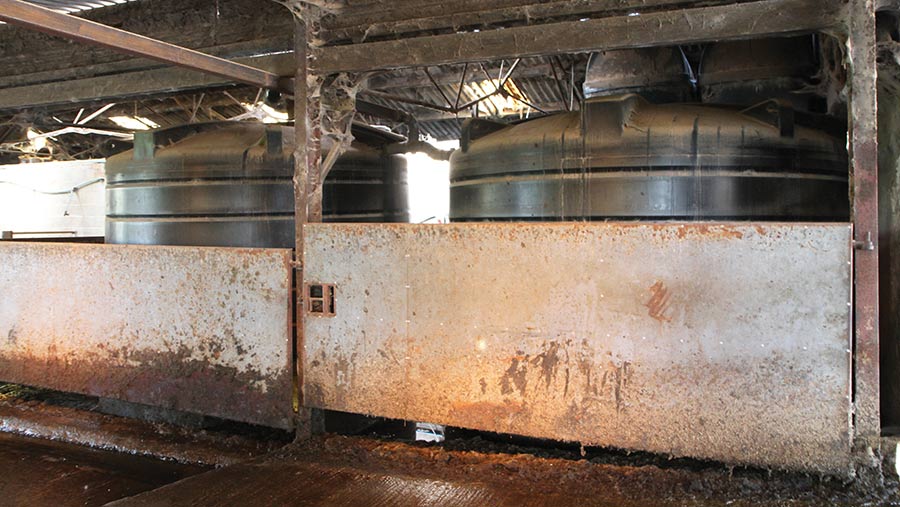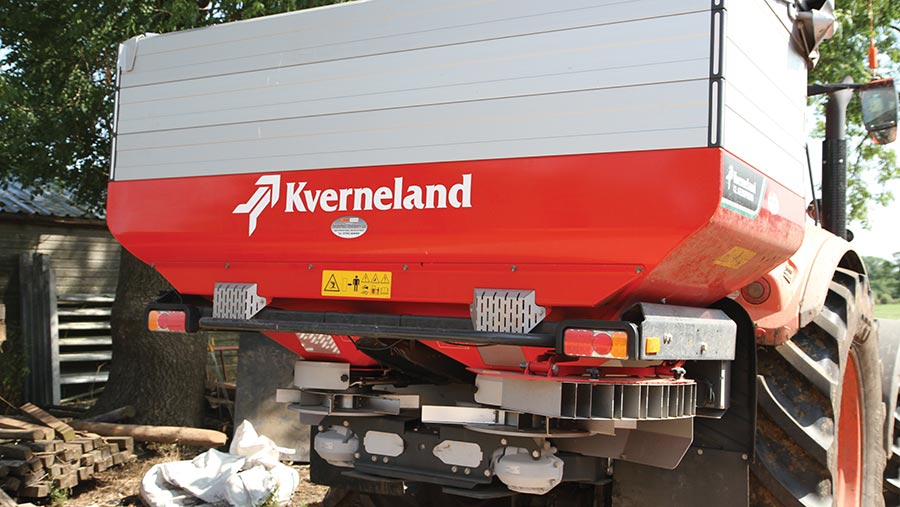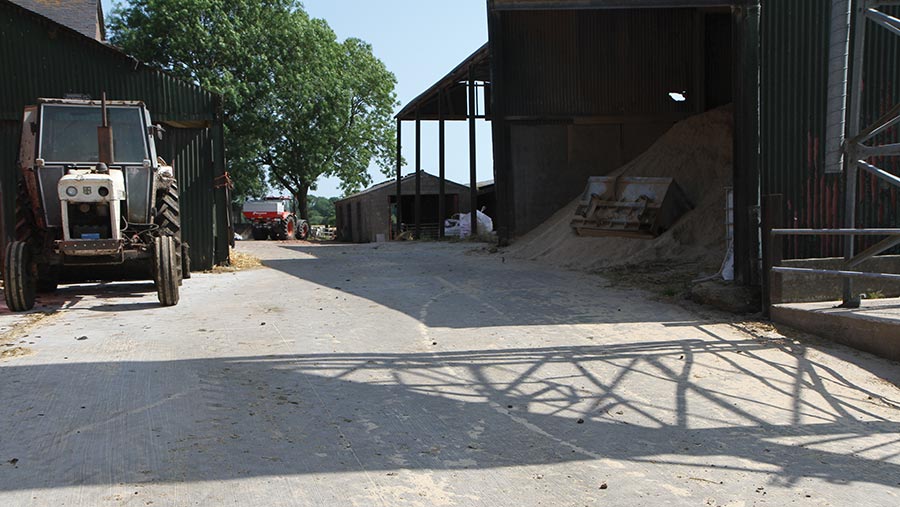How to protect watercourses from pollution and grants to help
 © Severn Trent
© Severn Trent All livestock pose a year-round risk to water courses. The risks will vary depending on environmental conditions and whether stock are housed or at grass.
However, steps can be taken to reduce the risk of manure or fertiliser contaminating watercourses, and the good news is that grants are available in some areas to help with capital works.
We speak to Severn Trent agricultural adviser Mark Biddulph to find out what can be done to protect watercourses on farms, what grants are available and talk to a farmer who has benefited from Severn Trent funding.
See also: 10 ways to cut water pollution on an outdoor pig unit
Protect watercourses from livestock at turnout
The major risk to water while livestock is turned out, whether they be sheep or cattle, occurs when they drink directly in or from a stream or river.
Although this seems like the most natural way for animals to drink, faeces in the water and poaching of banks can lead to nutrient pollution and the spread of cryptosporidium parasites.
Steps that can be taken to remedy this include:
- Fencing off the watercourse and installing water troughs.
- Growing buffer margins. These are generally associated with planting between arable crops and water, to protect against spray drift. But they can play an important role in preventing pollution from any grassland inputs, while boosting biodiversity and making good use of what is often marginal land.
- If the farm requires animals to cross water, for example, dairy cows moving through a ford to and from the parlour, a piped culvert would be the best option. When used in conjunction with fencing, to create a short section where the water flows through a pipe underground, a clear path for livestock and machinery to cross is created.
Adhere to rules when applying manure and fertiliser
The Farming Rules for Water give guidelines for applying manure and fertiliser, outlining distances farmers can apply nutrients up to waterbodies.
Fertiliser should not be applied within 2m of inland freshwaters or boreholes and wells, although this can extend up to 50m for manure, depending on the equipment used to apply it.
On top of this, there are stricter guidelines for those with land in Nitrate Vulnerable Zones (NVZ) and Water Protection Zones (WPZ). So if you don’t already know whether your farm is affected by one of these, you can find out using Defra’s MAGIC map online tool
Grants available through Severn Trent
Severn Trent can offer a free independent Specialist On-Farm Advice service to those in the catchment. It also offers the following funding:
Seven Trent Environmental Protection Scheme (Steps) matches funding of up to £5,000 per farm, to address water quality issues, focusing on infrastructure and land management changes. Additional option for improving farm biodiversity. This closes on 22 June 2020 but will reopen in the autumn. Funding for concreting and other items through the Farmer Innovation section of Steps is only available in the winter funding round, opening in the autumn.
Eligibility:
Farmers must have:
• Land in the priority catchment in the Severn Trent region
• Have a minimum of 3ha, owned or leased
• Be actively farming that land.
Other grants available include:
• Farm to Tap: Payments of up to £5/ha to reward farmers for improving water quality by reducing metaldehyde slug pellet use. This scheme will open in July for the final time. Next year, this scheme will focus on other pesticides after metaldehyde is banned.
• Boost for Biodiversity: An opportunity for farmers/landowners to pitch for a share of £200,000 to fund biodiversity projects. This year’s funding round closed on 12 June, but will reopen again next spring.
In the farmyard
Making improvements in the yard will protect water and make operations easier when stock come back in for winter housing.
As a first step, check guttering around barns and sheds to ensure yards do not get filled up with excess rainwater and risk creating excess slurry.
Roofing certain areas of the yard, such as handling areas, will make a significant difference to run-off and often noticeably improve working condition.
Covering slurry pits and muck heaps will dramatically reduce the amount of water running through the contents. Therefore, minimising the risk of polluting water and improving storage capacity.
Case study: Manor Farm, Market Drayton, Shropshire
Mixed farmer Keith Bennett has cut fertiliser use by 5% and saved water while protecting watercourses from run-off.
Mr Bennett’s 220-cow dairy herd produces an average yield of 8,000 litres/year, but he also runs a small beef finishing unit producing Wagyu cattle across his 186ha mixed enterprise.
Mr Bennett applied for £5,000 of match funding from the Severn Trent Environmental Protection Scheme (Steps) in 2015, to help purchase rainwater harvesting equipment that holds more than 44,000 litres for washing down the parlour and housing areas.

Rainwater harvesting tanks at Manor Farm © Severn Trent
“We’re always especially glad to have the rainwater system in the summer, as it means we can save fresh water for the cattle and continue to wash down the sheds with the harvested water,” says Mr Bennett.
The following year, Mr Bennett decided to apply for Steps again, but this time for a Kverneland spreader, which has since improved the accuracy and efficiency of fertiliser inputs.

Kverneland precision spreader © Severn Trent
“The precision spreader links to GPS technology in the cab to deliver targeted application patterns that prevent overlap and, therefore, excessive nutrition. We’ve found this cuts fertiliser use by 5%, but has also reduced the risk of leaching, so protects the wider environment,” he explains.
Most recently (2017), Mr Bennett took on the challenge of improving the muddy yard, which he had endured over many winters, as he could not justify the expense without external funding.
“We were granted the maximum £5,000 to connect an area of the yard between the straw shed and a field to the parlour and housing. Since the concrete has gone down, the yard has been a considerably more pleasant and easy place to work.

The concrete yard at Manor Farm © Severn Trent
“The area is also far cleaner and there’s no longer dirty water flowing towards the ditches and drains, which should significantly improve local water quality.”
